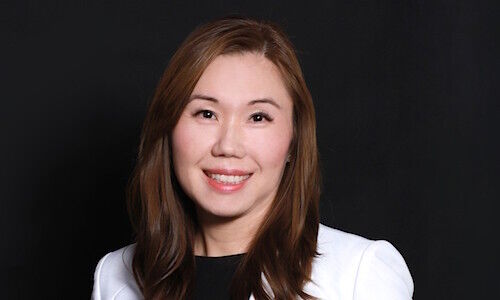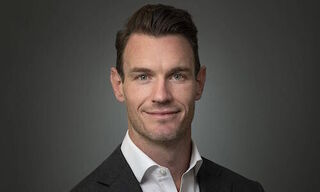Gérard Piasko: «How Similar Are 2019 and 1999?»
The economic cycles of 1999 and 2019 are remarkably similar. What does this mean for investors? Gérard Piasko says what they should look out for in his essay for finews.first.
This article is published on finews.first, a forum for authors specialized in economic and financial topics.
A few weeks ago, the U.S. economic cycle became more than ten years old and hence is the longest ever in economic history. The economic cycle of the 1990s, which lasted for ten years and ended with the bursting of the tech bubble in 2000/2001 has been surpassed in its duration – but not in terms of strength. What are the parallels and what are the differences between the two cycles?
In the 1990s, after the recession of 1990, a ten-year economic cycle started in the U.S. which also prompted an equally long bull market on the stock exchange. The boom was driven by American tech stocks, much like in the current cycle. The cycle in the 1990s was interrupted by emerging market crises, the Mexico crisis in 1994 and the crisis in Asia and Russia in 1997/98.
«The economic cycle was prolonged with the supply of cheap money»
Equally, in the current cycle, one could essentially point to two emerging market crises: in 2015/16 there was a crisis in China and in raw materials and in the past year the trade war erupted between the U.S. and China. The emerging-market crises have in common that global growth, but not so much American growth was affected.
There’s more common ground in the sense that the U.S. central bank paused its interest rate increases during each of these crises or even executed a rate cut. With cheap money, the economic cycle was prolonged.
On the other side, valuations were increased beyond a reasonable level, both for fixed income as well as equities, in particular for tech stocks, which investors had sought in particular because of the above-average profit growth.
«Government bonds are excessively priced»
This shows that there are parallels to the 1990s because U.S. tech stocks again are traded at higher (but not yet extreme) valuations, and government bonds are probably excessively priced. Furthermore, the rate cut to extend the economic cycle also makes apparent the parallels to the 1990s.
The American central bank is about to extend the U.S. economic cycle not least due to pressure from the government. Whether low rates of 0.75 percent or even 1.25 percent can solve the global economic problems at the end of this decade will become apparent in a couple of quarters only. They will, in any case, reinforce the problems with material disparities in many places, from Hong Kong to London.
«The discussions about the climate prompted many consumers to delay the purchase of a car»
There are some differences to the 1990s however: this time round, interest rates aren’t the cause of the global, and recently also American economic slowdown. The underlying reasons are: firstly, a general uncertainty among companies about the outcome of the trade conflict and potential unavailability of components.
Secondly, there are signs of saturation for consumer goods including smartphones, consumer electronics, and cars – also, because the discussions about the climate prompted many consumers to delay the purchase of a car. Thirdly, structural changes in many industries are leading to lower margins.
«It makes sense that an economic cycle with a lower rate of growth can get both longer and older»
I would like to draw attention to a final important difference to the 1990s: back then, the level of growth both of the global but also the American economy was markedly higher than during the current economic cycle. With two effects: first of all, it makes sense that an economic cycle with a lower rate of growth can get both longer and older. However, this doesn’t mean that the economic cycle will be less fragile in light of the bigger number of geopolitical problems compared with the 1990s.
Secondly, a structurally lower rate of growth engenders a weaker upwards pressure on inflation, which means that investors should ready themselves for lower returns, in particular in bonds.
Gérard Piasko was appointed chief investment officer (CIO) at Swiss-based private bank Maerki Baumann in early 2018. He is responsible for the investment strategy of the bank and the communication of its asset allocation vis-à-vis clients. Piasko for many years was the private banking CIO at Julius Baer, Bank Sal. Oppenheim (Switzerland) and, most recently, Deutsche Bank (Switzerland). He studied economics and law at the University of Zurich and achieved a postgraduate diploma from Columbia University in New York.
Previous contributions: Rudi Bogni, Peter Kurer, Oliver Berger, Rolf Banz, Dieter Ruloff, Werner Vogt, Walter Wittmann, Alfred Mettler, Peter Hody, Robert Holzach, Craig Murray, David Zollinger, Arthur Bolliger, Beat Kappeler, Chris Rowe, Stefan Gerlach, Marc Lussy, Nuno Fernandes, Richard Egger, Maurice Pedergnana, Marco Bargel, Steve Hanke, Urs Schoettli, Ursula Finsterwald, Stefan Kreuzkamp, Oliver Bussmann, Michael Benz, Peter Hody, Albert Steck, Martin Dahinden, Thomas Fedier, Alfred Mettler, Brigitte Strebel, Peter Hody, Mirjam Staub-Bisang, Nicolas Roth, Thorsten Polleit, Kim Iskyan, Stephen Dover, Denise Kenyon-Rouvinez, Christian Dreyer, Kinan Khadam-Al-Jame, Robert Hemmi, Anton Affentranger, Yves Mirabaud, Katharina Bart, Frédéric Papp, Hans-Martin Kraus, Gerard Guerdat, Mario Bassi, Stephen Thariyan, Dan Steinbock, Rino Borini, Bert Flossbach, Michael Hasenstab, Guido Schilling, Werner E. Rutsch, Dorte Bech Vizard, Adriano B. Lucatelli, Katharina Bart, Maya Bhandari, Jean Tirole, Hans Jakob Roth, Marco Martinelli, Thomas Sutter, Tom King, Werner Peyer, Thomas Kupfer, Peter Kurer, Arturo Bris, Frederic Papp, James Syme, Dennis Larsen, Bernd Kramer, Ralph Ebert, Marionna Wegenstein, Armin Jans, Nicolas Roth, Hans Ulrich Jost, Patrick Hunger, Fabrizio Quirighetti, Claire Shaw, Peter Fanconi, Alex Wolf, Dan Steinbock, Patrick Scheurle, Sandro Occhilupo, Will Ballard, Michael Bornhaeusser, Nicholas Yeo, Claude-Alain Margelisch, Jean-François Hirschel, Jens Pongratz, Samuel Gerber, Philipp Weckherlin, Anne Richards, Antoni Trenchev, Benoit Barbereau, Pascal R. Bersier, Shaul Lifshitz, Klaus Breiner, Ana Botín, Martin Gilbert, Jesper Koll, Ingo Rauser, Carlo Capaul, Claude Baumann, Markus Winkler, Konrad Hummler, Thomas Steinemann, Christina Boeck, Guillaume Compeyron, Miro Zivkovic, Alexander F. Wagner, Eric Heymann, Christoph Sax, Felix Brem, Jochen Moebert, Jacques-Aurélien Marcireau, Peter Hody, Ursula Finsterwald, Claudia Kraaz, Michel Longhini, Stefan Blum, Zsolt Kohalmi, Karin M. Klossek, Nicolas Ramelet, Søren Bjønness, Lamara von Albertini, Andreas Britt, Gilles Prince, Fabrizio Pagani, Darren Willams, Salman Ahmed, Stephane Monier, and Peter van der Welle, Swetha Ramachandran, Teodoro Cocca, Beat Wittmann, Ken Orchard, Michael Welti, Christian Gast, Didier Saint-Georges, Jeffrey Bohn, Juergen Braunstein, and Jeff Voegeli.



























